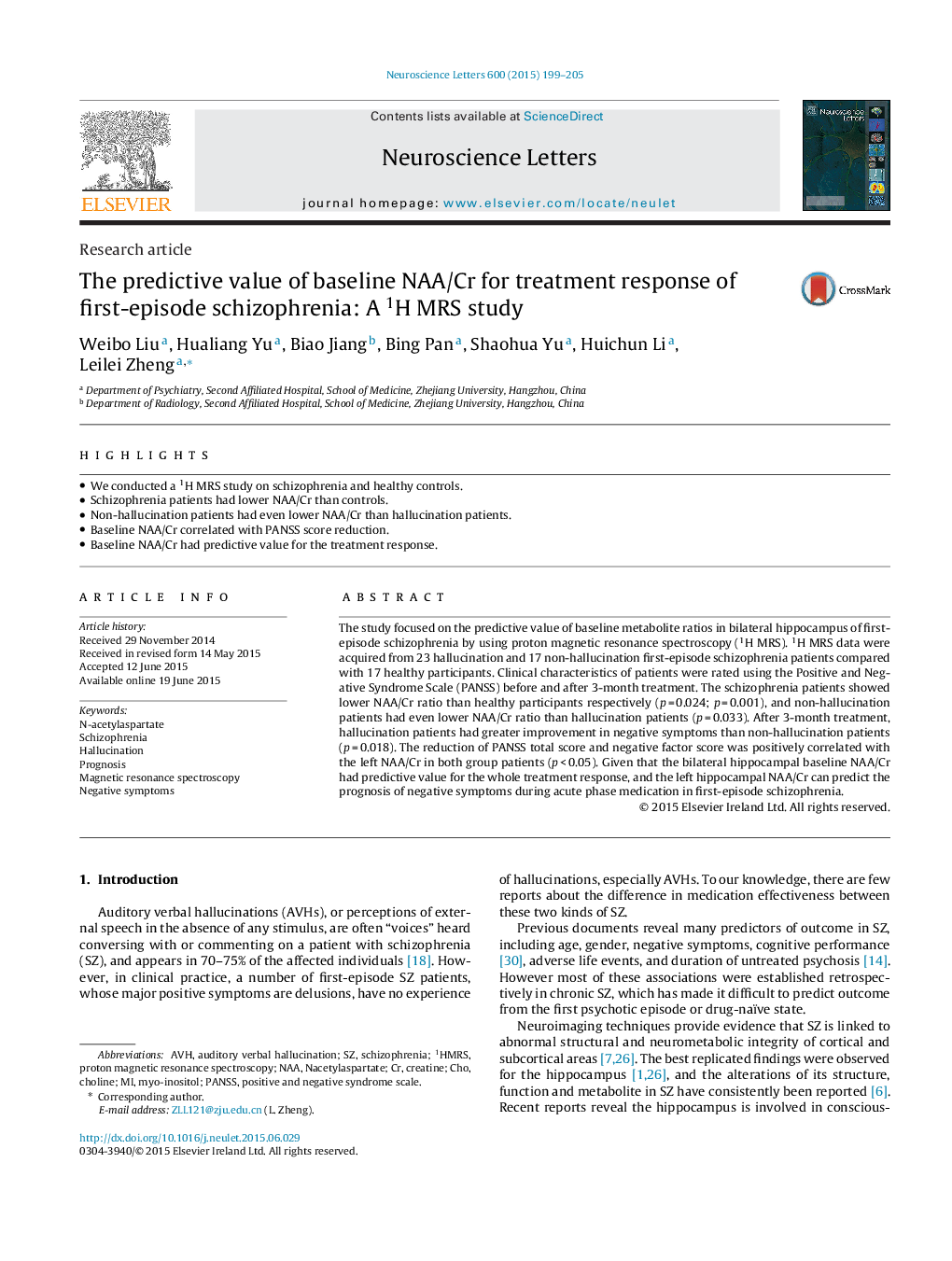| Article ID | Journal | Published Year | Pages | File Type |
|---|---|---|---|---|
| 4343410 | Neuroscience Letters | 2015 | 7 Pages |
•We conducted a 1H MRS study on schizophrenia and healthy controls.•Schizophrenia patients had lower NAA/Cr than controls.•Non-hallucination patients had even lower NAA/Cr than hallucination patients.•Baseline NAA/Cr correlated with PANSS score reduction.•Baseline NAA/Cr had predictive value for the treatment response.
The study focused on the predictive value of baseline metabolite ratios in bilateral hippocampus of first-episode schizophrenia by using proton magnetic resonance spectroscopy (1H MRS). 1H MRS data were acquired from 23 hallucination and 17 non-hallucination first-episode schizophrenia patients compared with 17 healthy participants. Clinical characteristics of patients were rated using the Positive and Negative Syndrome Scale (PANSS) before and after 3-month treatment. The schizophrenia patients showed lower NAA/Cr ratio than healthy participants respectively (p = 0.024; p = 0.001), and non-hallucination patients had even lower NAA/Cr ratio than hallucination patients (p = 0.033). After 3-month treatment, hallucination patients had greater improvement in negative symptoms than non-hallucination patients (p = 0.018). The reduction of PANSS total score and negative factor score was positively correlated with the left NAA/Cr in both group patients (p < 0.05). Given that the bilateral hippocampal baseline NAA/Cr had predictive value for the whole treatment response, and the left hippocampal NAA/Cr can predict the prognosis of negative symptoms during acute phase medication in first-episode schizophrenia.
